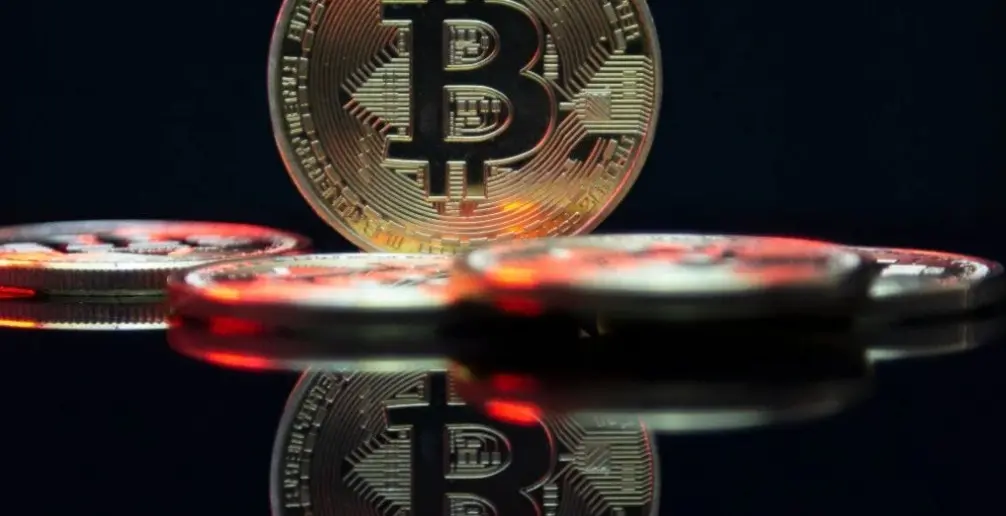After the Bitcoin halving, a bull market follows. Can history repeat itself?
Author: Xiyou, ChainCatcher
Editor: Marco, ChainCatcher
On the morning of April 20, at block height 840000, Bitcoin completed its fourth halving. After the halving, the reward for miners per block has decreased from 6.25 BTC to 3.125 BTC.
In the week leading up to the halving, the price of BTC plummeted from $70,000 to $59,600, marking the lowest price since March. As of the time of publication, the price of BTC has stabilized around $63,000, with a cumulative decline of 10% over the past 7 days.
The essence of Bitcoin halving is to control the speed of Bitcoin supply and inflation rate by programmatically reducing the output rate of Bitcoin, thereby lowering the issuance speed of new coins and reducing the supply of tokens, which in turn decreases the inflation rate.
After this halving, miners' daily contribution to the market has decreased from 900 BTC to about 450 BTC, and the issuance speed of BTC has dropped from 1.8% to 0.83%.
Due to the reduction in issuance supply, the imbalance between supply and demand in the market may exacerbate Bitcoin's scarcity and drive prices upward.
Historically, after the first three Bitcoin halvings, the price of BTC saw significant increases to varying degrees, closely related to the bull market cycle of the entire crypto market. Therefore, "Bitcoin halving" is also regarded as a catalyst for the crypto bull market, holding significant meaning for the development of the entire crypto market.
Chris Gannatti, global head of asset management at Bitcoin ETF company WisdomTree, bluntly stated, "Bitcoin halving is one of the most significant events in the crypto space this year."
Google Trends data shows that the search volume for the term "Bitcoin halving" has reached an all-time high, far exceeding the historical peak set in May 2020.

Halving Every 4 Years, Will Bitcoin Rise as Expected?
Every time 210,000 blocks are generated on the Bitcoin blockchain, the Bitcoin block reward is halved. The Bitcoin network generates a new block approximately every 10 minutes, so this halving occurs roughly every 4 years.
As of today, Bitcoin has completed 4 halvings, occurring in 2012, 2016, and 2020. Starting from an initial reward of 50 BTC per block, the first halving reduced it to 25 BTC, the second halving to 12.5 BTC, the third halving to 6.25 BTC, and the fourth halving, which occurred today, is now 3.125 BTC.

Looking back at the historical data from the three halvings, the price of BTC has rapidly increased within 6-18 months after each halving, reaching new historical highs. Therefore, the impact of halving on Bitcoin's price trend and subsequent market conditions has garnered industry attention and is referred to as an industry cycle.
The first halving was completed on November 28, 2012, and after the halving, the price of BTC rose from $12 to $1,242, an increase of over 100 times.
The second halving occurred on July 9, 2016, after which the price of BTC rose from $648 to $19,800, an increase of 4,158%.
The third halving was completed on May 12, 2020, with the price of BTC rising from $8,181 to $64,895, an increase of 693%.

The fourth halving was completed on April 20, 2024, with the price of Bitcoin around $63,000. Will it trigger a new round of explosive growth like the previous three halvings?
Regarding the impact of this halving on Bitcoin's future price trend, the general consensus in the industry is that the initial impact on Bitcoin's price is not significant, but in the long term, it is favorable. From a supply and demand perspective, Bitcoin halving reduces the speed of Bitcoin issuance, and the halving of miners' block rewards can also alleviate the speed at which new Bitcoins enter the market. A decrease in supply, with demand remaining stable or increasing, creates conditions for Bitcoin's price to rise.
Currently, several well-known figures in the crypto space are optimistic about the subsequent price trend of Bitcoin following this halving and have made bullish predictions.
Among them, Plan B stated that based on the analysis of Bitcoin's supply and halving expectations, the price range for Bitcoin after 2024 will be between $100,000 and $1,000,000, predicting that Bitcoin's price could soar to $532,000 by 2025.
Anthony Scaramucci, founder of Skybridge Capital, mentioned in January that Bitcoin's price could reach $170,000 or more within a year and a half after the halving, with a long-term outlook suggesting Bitcoin's market cap could reach half that of gold.
Michael Novogratz, CEO of Galaxy Digital, bets that Bitcoin will rise significantly, potentially reaching $150,000 after the halving.
Conversely, some industry insiders hold a bearish view on Bitcoin's future, arguing that the correlation between Bitcoin halving and price increases does not imply causation. They believe that modeling these events based solely on historical analysis is challenging, as multiple factors such as market sentiment, adoption trends, global market liquidity, and macroeconomic policies also influence Bitcoin's price trend.
Additionally, from a supply and demand perspective, there are already 19.7 million BTC mined, with about 1.3 million (21 million - 19.7 million) BTC remaining to be mined, which is a very small proportion. The impact of Bitcoin halving on Bitcoin's supply is already very weak and cannot be the main driving force behind Bitcoin's price increase.
Michael Zhao, a researcher at Grayscale, has warned that although historical precedents indicate price increases, it does not guarantee that Bitcoin's price will rise. He pointed out that external macroeconomic factors have played a significant role in past Bitcoin price surges, and halving is just one of many factors affecting Bitcoin's price.
Arthur Hayes, co-founder of BitMEX, stated in a recent article titled "Heatwave" released in April that he agrees that halving will push Bitcoin's price higher in the medium to long term. However, he predicts that Bitcoin's price will enter a turbulent period before and after the halving, forecasting a sharp decline in Bitcoin's price around the halving.
Pre-Halving, Mining Stocks Plummet
In addition to price trends, cryptocurrency miners are the group most affected by the Bitcoin reward halving, as the halving drastically reduces the input-output ratio of the Bitcoin mining industry. The halving of block rewards means that the number of BTC miners receive for newly mined blocks will be directly cut in half, making Bitcoin miners a target every four years. With the BTC price remaining unchanged and investment and operating costs unchanged, while mining rewards decrease, the investment return cycle for mining machines will lengthen. Coupled with the current outbreak of geopolitical conflicts and uncertainties in energy costs, the survival pressure on mining operations has surged.
Benchmark analyst Mark Palmer had warned before the halving that most publicly traded Bitcoin mining companies had already initiated or announced plans to increase their power and computing capacity as a means to adjust to reduced revenue and gross profit.
Bloomberg predicts that the entire cryptocurrency mining industry will incur losses of about $10 billion after this halving.
Before the halving, shares of leading publicly listed mining companies have already seen significant declines, with Marathon Digital Holdings (MARA), Riot Platforms (RIOT), Iris Energy (IREN), and CleanSpark (CLSK) all experiencing three consecutive days of stock price declines. Among them, the largest publicly traded Bitcoin miner, Marathon Digital Holdings, has seen its stock price drop over 20% in the past month, while Riot Platforms has fallen nearly 25%.
However, CleanSpark emphasized in an interview that Bitcoin halving does not equate to a halving of mining company revenues, as the difficulty of Bitcoin mining may decrease by as much as 15% after the halving, which will provide miners with additional rewards.
Regarding this halving, a miner who has experienced three halving cycles stated that the decrease in block rewards will lead to reduced income for miners, but the impact on large miners or mining companies is limited. For the miners who can remain, it is actually beneficial, as their market share in the entire mining market will increase. This halving will push mining further towards specialization, refinement, high efficiency, and concentration among leading players, while smaller, less advanced miners or operations will be eliminated.
He emphasized that the current profitability of mining is no longer solely from mining itself; transaction fees on the Bitcoin chain may become a new source of income.
Regarding the current mining costs, he calculated that for the S19 Pro+Hyd model, with a hash rate of 198 TH/s and a power consumption of 5445W, at a cost of $0.08, the shutdown price of Bitcoin would be around $65,056.
However, based on historical Bitcoin halving price performance, miners need not worry too much, as halving corresponds to an increase in Bitcoin's scarcity, and the eventual rise in Bitcoin's price typically easily covers the increased costs for mining companies.
Additionally, since the launch of Ordinals last December, Bitcoin's ecological applications have entered a phase of explosive growth, with Bitcoin ecological Layer 2, side chains, rune protocols, etc., continuously emerging, and the prosperity on-chain will also bring transaction income to Bitcoin miners.
Halving Impact Weaker Than Bitcoin Spot ETF
However, this halving is different from the previous three, as the entire crypto industry and Bitcoin itself are undergoing some noteworthy new changes. The Bitcoin market has become increasingly mature, with more exchanges, financial products, and traditional financial investors participating. On-chain ecological products such as Ordinals, inscriptions, BRC20, and Bitcoin Layer 2 are flourishing, requiring users to rethink and reassess Bitcoin as an asset from a new perspective.
"Quiet" is how an OG who has experienced three Bitcoin halving cycles feels about this halving.
He explained that the enthusiasm for Bitcoin's fourth halving is far less than that of the previous three. The first two halvings in 2016 and 2020 attracted immense attention from the crypto market, with various discussions about halving flooding major communities, and news related to halving was rampant, including AMAs and offline events. Even tokens like BCH and LTC would be hyped months in advance before their halvings. After the 2016 halving, there was the Ethereum ICO, and the DeFi Summer and public chain wars in 2020. In contrast, the community's attention to Bitcoin's fourth halving seems to be low, with very few discussions about halving among community users, and news coverage about Bitcoin halving is sparse and pitiful.
Another OG noted that not only is this halving lacking in enthusiasm, but the current Bitcoin price increase is also less fervent than usual. It seems that users only became active after Bitcoin quietly broke through $70,000.
In this regard, community user Lin stated that a significant reason behind this is that the main driver of this price increase is the Bitcoin spot ETF, primarily led by institutions, with retail investors accounting for a smaller proportion.
Moreover, with the development of blockchain technology through several bull market cycles, the crypto market has evolved from Bitcoin and Ethereum to various Layer 1 and Layer 2, LST, Bitcoin inscription ecology, DeFi, GameFi, AI, and other niche products. Bitcoin is no longer the only choice for users, and their attention has been diverted.
Currently, the market capitalization of the crypto market is approaching $2.5 trillion, with Bitcoin's market cap accounting for about 50% ($1.27 trillion), while the remaining 50% consists of various niche assets.
Compared to previous halvings, the only difference in Bitcoin's fourth halving is the Bitcoin spot ETF, which has an impact on the supply-demand dynamics of Bitcoin that even surpasses that of the halving. An increasing number of institutional investors are beginning to include Bitcoin in their portfolios, and these institutional investors have more funds and resources, their participation will trigger larger-scale market fluctuations.
Since the U.S. approved the Bitcoin spot ETF in January, the weekly inflow into Bitcoin ETFs has ranged from $1.2 billion to as much as $2.5 billion, with a cumulative inflow of over $10 billion into the crypto market.
Currently, the average daily trading volume of the Bitcoin spot ETF is estimated to be between $4 billion and $5 billion, accounting for 15-20% of the total trading volume of global centralized exchanges.
On April 19, Glassnode data showed that the total assets under management of spot Bitcoin ETFs approached $60 billion, holding 851,000 BTC, which is about 4.3% of the total circulating Bitcoin supply.

On April 15, Hong Kong approved the Bitcoin spot ETF.
The launch of the spot Bitcoin ETF has significantly changed the supply-demand dynamics of BTC and established a new benchmark for BTC demand. Essentially, the ETF has reduced the available BTC supply in the market through large and continuous purchasing activities.
Glassnode charts show that the amount of Bitcoin absorbed by the ETF from the market far exceeds the amount of Bitcoin mined by miners daily.

Compared to the surging demand for ETFs, the impact of newly mined and circulated Bitcoin is becoming increasingly negligible.
Shen Yu also stated that the current market players are different from previous players, with the main characteristic of this cycle being that incremental funds are primarily flowing into Bitcoin through channels like ETFs.










